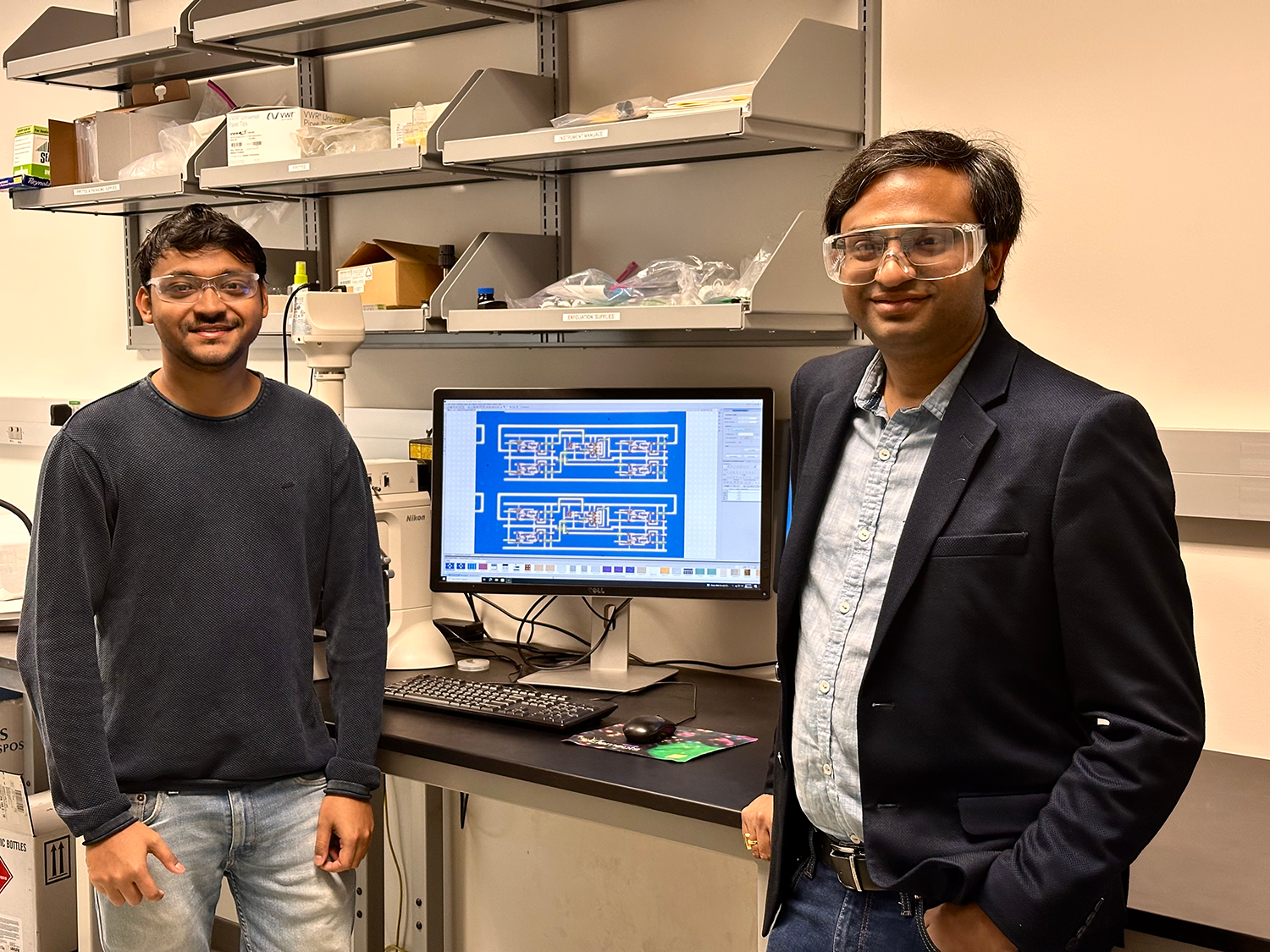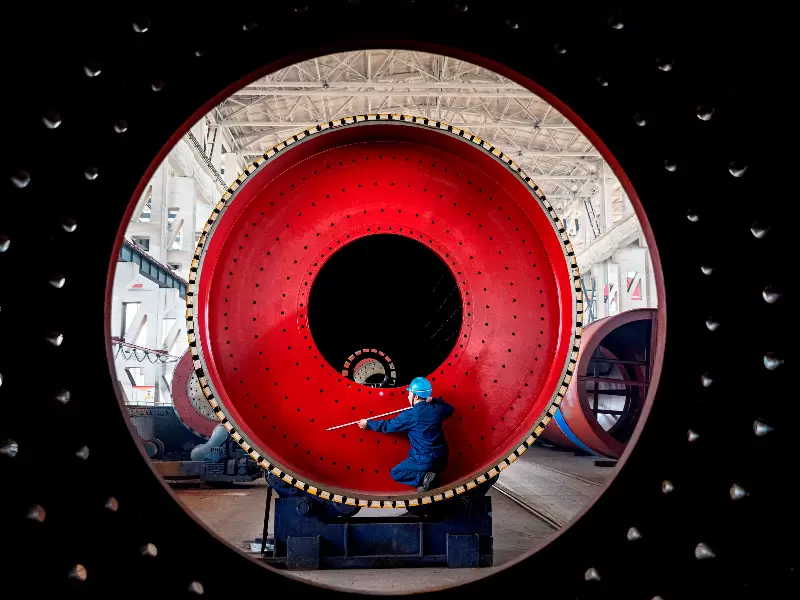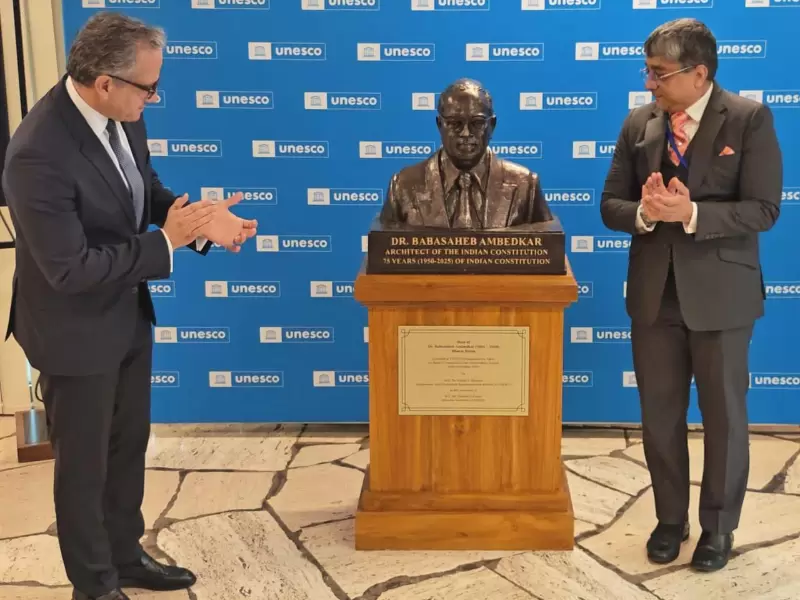Indian-American researcher at Penn State invents world's first 2D computer
The device performs basic logic functions at frequencies up to 25 kilohertz with low power consumption.
 Subir Ghosh, left, and Saptarshi Das, right, led a team in developing a silicon-free, complementary metal-oxide-semiconductor computer capable of simple operations. Displayed between them is an microscope image of the fabricated computer. / Penn State
Subir Ghosh, left, and Saptarshi Das, right, led a team in developing a silicon-free, complementary metal-oxide-semiconductor computer capable of simple operations. Displayed between them is an microscope image of the fabricated computer. / Penn State
Researchers at Penn State have developed the world’s first computer entirely built using two-dimensional (2D), non-silicon materials — marking a major leap toward faster, thinner, and more energy-efficient electronics.
Led by Indian-American scientist Saptarshi Das, Ackley Professor of Engineering and Professor of Engineering Science and Mechanics at Penn State, the study—published in Nature—showcases a fully functional complementary metal-oxide semiconductor (CMOS) computer constructed from atomically thin materials, molybdenum disulfide and tungsten diselenide.
Also read: Indian-origin researchers develop battery-free smart sensors
Unlike traditional silicon, these 2D materials retain exceptional electronic properties even at atomic scales, overcoming the performance limitations silicon faces as transistors continue to shrink.
“Silicon has driven remarkable advances in electronics for decades by enabling continuous miniaturization of field-effect transistors (FETs),” said Das, “Two-dimensional materials, by contrast, maintain their exceptional electronic properties at atomic thickness, offering a promising path forward.”
Using metal-organic chemical vapor deposition (MOCVD), the team fabricated over 1,000 transistors of each type — n-type and p-type — and tuned their electrical properties to construct a one-instruction-set computer.
The device performs basic logic functions at frequencies up to 25 kilohertz with low power consumption. Though modest in speed, the achievement demonstrates that 2D materials can be scaled beyond simple circuits — a milestone that previous research could not reach.
 This conceptual illustration of a computer based on 2D molecules displays an actual scanning electron microscope image of the computer fabricated by a team by researchers at Penn State. The keyboard features highlighted keys labeled with the abbreviations for molybdenum disulfide and tungsten diselenide, representing the two 2D materials used to develop the transistors in the computer. / Credit: Krishnendu Mukhopadhyay/Penn State.
This conceptual illustration of a computer based on 2D molecules displays an actual scanning electron microscope image of the computer fabricated by a team by researchers at Penn State. The keyboard features highlighted keys labeled with the abbreviations for molybdenum disulfide and tungsten diselenide, representing the two 2D materials used to develop the transistors in the computer. / Credit: Krishnendu Mukhopadhyay/Penn State.First author Subir Ghosh, an engineering doctoral student under Das, emphasized the potential of the team’s model to benchmark and improve 2D computing systems against modern silicon-based technology.
“Although there remains scope for further optimization, this work marks a significant milestone in harnessing 2D materials to advance the field of electronics,” Ghosh said.
The work was supported by the U.S. National Science Foundation, the Army Research Office, and the Office of Naval Research, with contributions from several Indian and U.S. institutions. The researchers credit Penn State’s 2D Crystal Consortium for providing critical infrastructure.
ADVERTISEMENT
ADVERTISEMENT
E Paper
Video



 Bhavana P
Bhavana P












Comments
Start the conversation
Become a member of New India Abroad to start commenting.
Sign Up Now
Already have an account? Login